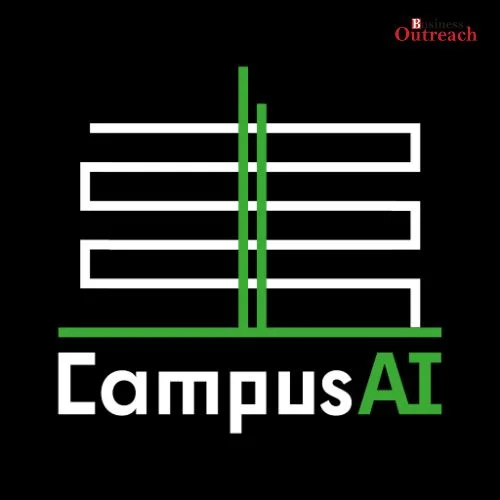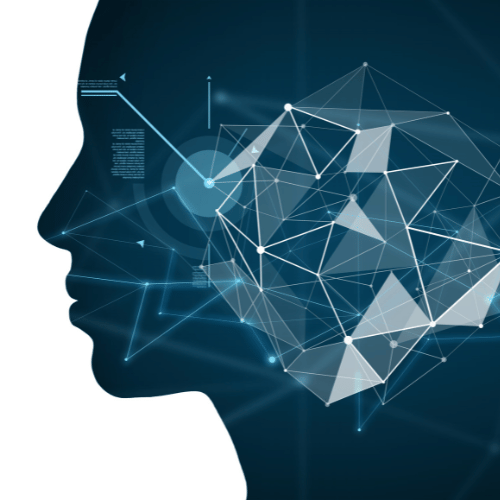Source: Start Neosharing
Introduction
Artificial intelligence (AI) is poised to transform businesses and economies around the world. AI refers to computer systems that can perform tasks normally requiring human intelligence, such as visual perception, speech recognition, and decision-making. With rapid advances in machine learning and big data analytics, AI is becoming incredibly sophisticated and ubiquitous across industries.
While AI promises improved efficiencies, cost savings, and new revenue opportunities, it also brings potential economic risks and challenges. Businesses must navigate carefully to maximize the rewards of AI while minimizing the risks. This article examines the significant economic impacts, both positive and negative, that artificial intelligence will likely have on companies and the broader economy.
| Rewards | Risks |
| Increased Productivity and Operational Efficiencies | Job Losses |
| New Revenue Streams and Business Models | Lack of Transparency |
| Improved Decision Making | Technology Costs |
| Enhanced Innovation Capabilities | Uneven Access to AI |
| Improved Customer Experiences | Data for AI Raising Privacy Concerns |
Rewards of AI Adoption
Increased Productivity and Operational Efficiencies
Source: PixelPlex
AI can dramatically boost productivity and enhance operational efficiencies. According to a 2021 PwC report, AI could contribute up to $15.7 trillion to the global economy by 2030, increasing global GDP by about 14%. AI can automate repetitive and routine tasks, allowing human employees to focus on more value-adding work.
For example, chatbots can handle simple customer service queries, while human agents resolve more complex issues. Similarly, manufacturing plants can use AI-enabled computer vision to spot defects, quality check products, and reduce waste. The ability to do more with less saves companies substantial time and money.
New Revenue Streams and Business Models
Source: MarketsandMarkets
AI also creates opportunities to develop new revenue streams and business models. Many companies now monetize their AI capabilities directly. Fortune 500 companies provide AI-as-a-service to other businesses looking to upgrade their operations without large upfront investments. Developers create and sell AI software applications and tools on app stores. Other companies utilize AI to make data-driven insights and recommendations that enable new product offerings.
Leveraging data to understand customers better allows companies to create customized and targeted products that fetch premium prices. Management consultancies use AI to provide real-time, tailored business insights for clients. As AI capabilities grow, increasing avenues for AI-enabled products and services will emerge.
Improved Decision Making
Source: Infosense AI
Additionally, AI has the unique ability to analyze massive amounts of structured and unstructured data very quickly. The insights uncovered from big data analytics enhance decision-making significantly. Companies can better predict customer demand, spot macroeconomic trends, identify mitigating actions well in time, and reduce financial risk. AI makes decisions more accurately than humans in certain situations by eliminating various cognitive biases.
An MIT study found that companies that have adopted data-driven decision-making are 4% more productive and 6% more profitable than their competitors. The ability to incorporate data and evidence better into the decision-making process impacts strategic planning capabilities enormously.
Enhanced Innovation Capabilities
Source: Beinsure
AI augments human creativity rather than replaces it. Algorithms can churn through countless combinations of data, variables, and decision trees at speeds impossible for human brains. This ability to deeply explore datasets, identify previously unseen patterns, and generate new insights primes business innovation. Companies can experiment with myriad product variations, pricing models, and customer segmentation strategies to uncover niche markets and blockbuster offerings.
For example, AI helps researchers systematically uncover new enzyme combinations accelerating drug discovery. Fashion retailers like Stitch Fix apply AI to design customized apparel collections catering to unique style preferences. The heightened innovation and ideation powered by AI systems allow companies to create differentiated offerings giving them lasting competitive edges.
Improved Customer Experiences
Source: MoogleLabs
Additionally, AI-powered technologies elevate customer experiences significantly. Chatbots and virtual assistants create personalized, 24/7 customer support improving brand loyalty. Recommendation engines serve up perfectly tailored products. Voice recognition elevates hands-free product experiences through auto assistants like Alexa and Siri. Computer vision advancing augmented reality/virtual reality immerses users more deeply. And hyper-personalized mobile push notifications keep customers engaged longer.
Research shows about 80% of customers now expect personalized interactions while over 90% find personalization appealing. AI’s ability to unobtrusively tailor offerings precisely to individual consumer preferences takes customization to new heights. Companies leveraging AI to boost customer experiences benefit from increased user spend, higher renewal rates, and valuable data capturing micro-trends in real-time. The resulting competitive differentiation has become imperative in the experience economy.
Risks and Challenges of AI
Job Losses
Source: LinkedIn
However, some experts believe that AI could also displace many jobs and worsen income inequality. A 2018 PwC report estimates that roughly 7 million existing jobs in the UK are at high risk of automation by the early 2030s. These are typically routine, repetitive jobs like data entry clerks and assembly line workers. But AI also threatens certain high-skill jobs now by automating tasks rather than whole jobs. Report generation, analyzing test results, preparing taxes, etc. can all be easily done by AI.
As such, the demand for various skilled professionals like analysts, accountants, lawyers, and radiologists may decrease. This significant job displacement can undermine consumer purchasing power due to loss of income and leave many workers marginalized.
Lack of Transparency
Source: Marpov
Another major issue with powerful AI systems is their black-box nature and lack of transparency. The latest AI techniques like deep learning use neural networks that discern complex patterns within massive datasets. However, it is almost impossible to fully explain the rationale behind the decisions and predictions made by advanced AI models.
The inner workings seem too complex, dynamic, and opaque to humans. This lack of explainability and audibility can be hazardous when AI is used in sensitive domains like healthcare, finance, military technology, and criminal justice. Errors can also creep in undetected and get propagated through feedback loops in learning algorithms. If companies cannot justify the logic behind AI models properly, they risk losing customer and regulatory trust.
Technology Costs
Source: Shaip
Heavy upfront investments required to build advanced AI capabilities may deter some businesses still struggling with tight budgets and digital transformation. Acquiring high-quality datasets, specialized AI talent, and the latest hardware like AI chips and quantum computing comes at steep prices. Extensive training is required before machine learning algorithms can make accurate predictions and drive ROI.
Small and medium enterprises especially may lack the sizable capital and resources needed to fully nurture complex AI systems internally. Hence cloud-based AI services provided by third parties serve as more feasible options despite risks like data privacy and vendor lock-ins.
Uneven Access to AI
Source: Elcom
The economic risks posed by AI extend beyond labor substitution and lack of transparency. Some experts argue AI itself will not cause job losses or skills gaps, but rather a failure to equip workers and businesses with the tools needed to thrive in an AI world. This uneven access to the technological resources and knowledge required to effectively utilize AI across sectors, regions, and income brackets can exacerbate inequality.
Developed nations and large tech firms armed with vast data pools and funding are evolving AI rapidly. Smaller firms unable to re-skill workforces or raise investor capital get left even farther behind. Such an imbalance where AI benefits accrue disproportionately to parts of society risks hampering overall long-term economic development and stability.
Data for AI Raising Privacy Concerns
Source: DataGrail
Most advanced AI systems require massive amounts of high-quality data to function optimally. Only by ingesting huge datasets can algorithms discern patterns and train predictive models effectively. As such data processing, aggregation, sharing and analysis intensify, AI exacerbates data privacy issues in significant ways. Companies now store, combine, and utilize consumer data for countless unrelated purposes beyond the originally intended transaction. Microtargeting marketing based on an individual’s web browsing, purchase histories, location, or other personal data often occurs without the person’s consent or knowledge.
Data leaks and breaches exposing sensitive information to criminals also undermine customer trust. If consumers perceive their data being weaponized against them through real-time tracking and targeting, they may revolt against businesses relying on such techniques. Strict new privacy regulations like GDPR and CCPA also constrain certain lucrative AI applications dependent on free access to data. Unless businesses using AI properly anonymize datasets and keep transparency around data usage, public backlash, and regulatory fines may undermine their goals. The data fueling AI advances carries both power and peril depending on how judiciously organizations leverage such information.
Conclusion
The mixed impact of AI means businesses must adopt sound strategies maximizing productive outcomes while safeguarding against the challenges. Key economic precautions include monitoring algorithmic decisions to prevent biases and errors, reskilling workforces continually as tasks automate, protecting consumer data privacy to maintain trust, collaborating across industries to set AI best practices, and investing to upgrade legacy technology systems. Governments also have critical roles to play by updating worker protections, education policies, and privacy/technology regulations for the AI age.
Ultimately AI is poised to unlock tremendous economic value. But as with any technological transformation, proactive management of all stakeholders is vital to ensure broadly shared prosperity. By taking a measured approach, companies can harness the substantial productivity-enhancing powers of artificial intelligence while keeping the risks at bay. The businesses that will thrive in the coming years understand AI’s opportunities and limitations deeply enough to incorporate the technology responsibly for strategic gains.















